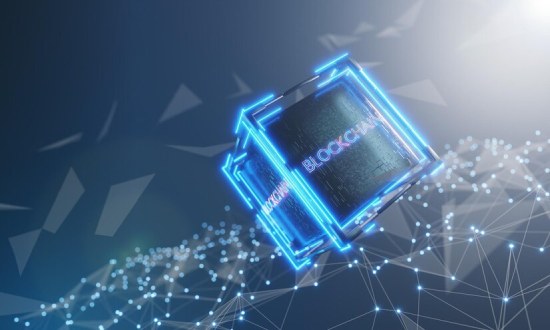-
The world of Web3 is blooming extensively. Did you know that in Q2 of 2024, the decentralized application (dApp) industry saw a game-changing surge? Daily unique active wallets (UAW) reached an all-time high of 10 million, reflecting a remarkable 40% increase from the previous quarter. This DappRadar report highlights the strong growth and rising user interest in decentralized applications. However, to sustain and further accelerate this growth in dApp usage, we must address a key challenge: the complexities of navigating the decentralized web. This includes the complex Dapp navigation from different wallets, and gas fees to users switching between multiple blockchain networks. This challenge is a major concern as it impedes smooth web3 user experiences and drops significant mainstream adoption. Chain abstraction emerges as one of the key blockchain solutions to this challenge of mass adoption in the Web3 space. It empowers developers to build applications that function seamlessly across multiple blockchains, simplifying the overall user experience. This technology alleviates complexity for users. It enables them to engage with various dApps without having to understand the details of different blockchain protocols. Consequently, it enhances accessibility and convenience, driving the overall growth of the Web3 ecosystem.
In this blog, let's explore how this chain abstraction innovation is paving the way for the future of decentralized applications and Web3.
Also Read | ERC-4337: Ethereum's Account Abstraction ProposalWhat is Chain Abstraction
Imagine if you could only send messages from an iPhone to another iPhone, but not to an Android. Frustrating, right? Now, translate that to Web3: users want to interact with decentralized applications (dApps) across different blockchains but often face unnecessary UX barriers. For instance, you might be excited to buy a new token getting lots of buzz, only to find it's on a blockchain you've never used. You don't have the right wallet, or the native token for fees. Now you have to create a wallet, learn how the blockchain works, and navigate its interface. It's time-consuming, confusing, and frankly, a roadblock to the seamless experience we expect.
As more dApps expand across multiple blockchains, these challenges grow. The complexity becomes overwhelming, not just for users but also for developers looking to scale their apps across chains. How time-consuming should it be?
Definition: Chain abstraction is NEAR's solution to untangling the complexities of blockchain interaction. It makes blockchain invisible to the end user. They don't need to know which blockchain they're using, or even that they're using one at all. It allows users to interact with any blockchain using a single, familiar interface, while tools and libraries handle all the technical details in the background.
Chain abstraction lets users connect with any blockchain through one interface. For this, tools and libraries handle the complex details of each blockchain, simplifying the process. For example, users can buy tokens on Near, Ethereum, or Solana with their MetaMask wallet, without needing different wallets or switching blockchains.
Explore | ERC 4337: Account Abstraction for Ethereum Smart Contract Wallets
Need For Chain Abstraction
The vision of Web3 stands very simple: to build a decentralized internet where users have full control over their digital interactions and assets. However, the reality of using decentralized applications (dApps) today often falls short of this goal. Users must navigate a complicated landscape of exchanges, wallets, gas fees, and different blockchain networks. This results in a disjointed, frustrating, and fragmented user experience that poses a major obstacle to widespread adoption.
Also, Web3 tackled scalability by breaking blockchain functions like settlement and execution into separate parts. This shift sparked the creation of layer-2 solutions, rollups, sidechains, and state channels. While this approach boosted scalability, it also increased fragmentation. Each solution built its own ecosystem, leading to isolated liquidity pools, divided user bases, and added complexity for both developers and users.
For example, a user trying to purchase an item via a dApp must first buy crypto on an exchange, transfer it to a compatible wallet, switch to the correct network, and check that they have enough gas fees. They then complete the transaction, which often involves multiple confirmations and signatures. But does this process sound anything like the seamless, user-friendly experience that Web2 applications offer? That's why chain abstraction emerges as a key development for Web3's future.
As we explore the evolving Web3 landscape, several significant challenges stand out, creating friction for both developers and users:
✔ Handling Multiple Wallets and Addresses: Users frequently manage several wallets and blockchain addresses, complicating their digital interactions and introducing unnecessary UX friction.
✔ Manual Asset Bridging: Transferring assets across different blockchains generally requires manual bridging, a process that is both tedious and inconvenient.
✔ Navigating Gas Fees and Token Structures: The diverse gas fees and token structures across various networks add layers of complexity, forcing users to navigate unfamiliar systems.
✔ Network Switching: Accessing various decentralized applications (dApps) often necessitates switching between networks, which can be both confusing and frustrating for users.
✔ Comprehending Technical Variations: Users often struggle with the technical differences among various blockchains, making it challenging to effectively engage with decentralized applications.
Check It Out | A Quick Guide to Ethereum ERC Token Standards
How Does Chain Abstraction Work
The concept makes interacting with multiple blockchains easier by using tools and libraries that handle the complexity for you. Instead of dealing with each blockchain individually, users can connect to any chain through a single interface, while the system quietly manages the different networks, wallets, and tokens behind the scenes. This streamlined approach allows dApps to scale smoothly across multiple chains, all while maintaining a seamless, user-friendly experience.

The infographic below clearly illustrates how integrating the concept simplifies the Web3 landscape.
Suggested Read | How to Create an NFT Rental Marketplace using ERC 4907
Benefits of Chain Abstraction
Defragmenting Liquidity and Avoiding UX Friction
Chain abstraction unifies fragmented ecosystems, simplifying interactions across different blockchains.
Simplified Development
Developers can build without needing deep expertise in the specifics of each blockchain.
Interoperability
Easily connect and operate across multiple blockchains using the same interface.
No Lock-In
Users can switch between or use multiple blockchains freely, without being tied to one ecosystem.
Cost Savings
Users can select blockchains with lower fees, optimizing their transactions without the hassle.
Better User Experience
Chain abstraction removes the need for users to understand blockchain mechanics, delivering a smooth, intuitive experience.
Scalability
Distribute workloads across different chains, improving efficiency.
Enhanced Security
Chain abstraction allows users to leverage the most secure features from different blockchains.

Read Also | How to Build a Multi-Chain Account Abstraction Wallet
Case Studies of Chain Abstraction
Chain abstraction has real, tangible applications. For instance, it streamlines asset transfers between the NEAR blockchain and Ethereum, allowing users to move assets seamlessly between the two ecosystems. The ease of switching between chains without manual intervention represents a significant leap in the Web3 experience. Let's focus on the below-mentioned case studies.
NEAR Protocol
Cross-Chain Interoperability: With its user-friendly design, NEAR offers a Proof-Of-Stake (PoS) Layer 1 solution for building dApps without the need for extensive blockchain knowledge. NEAR facilitates interaction between multiple blockchains by allowing users and developers to transfer assets and data seamlessly across networks. This interoperability is a core aspect of chain abstraction.
Key Statistic: Daily active addresses reached 1.2 million in July 2024, a 42% quarter-over-quarter increase and a 377% rise over six months.
Thorchain
Non-Custodial Asset Exchange: Built using the Cosmos SDK, Thorchain is a decentralized liquidity protocol that enables permissionless, cross-chain swaps between different cryptocurrencies. It enables users to swap assets across different blockchains in a non-custodial manner. This means users retain control of their funds, exemplifying chain abstraction by allowing seamless asset transfers without centralized intermediaries.
Key Statistic: As of now, THORChain's 24-hour trading volume is approximately $61,331,729. (CoinGecko Report)
Particle Network
Cross-Chain Integration and Identity Solutions: Particle Network is a blockchain project focused on chain abstraction and modular blockchain infrastructure. It provides tools and Application Programming Interfaces (APIs) for developers to create applications that interact with multiple blockchains. Its decentralized identity solutions allow users to manage assets across various networks, further demonstrating chain abstraction by ensuring a unified user experience regardless of the underlying blockchain.
In summary, these projects exemplify chain abstraction by enabling cross-chain interactions, enhancing user experiences, and promoting interoperability among different blockchain networks. This trend is crucial for the evolution of decentralized applications and the broader Web3 ecosystem.
Key Statistic: After achieving 900+ integrations and activating over 17 million wallets, Particle Network launches its L1 to enhance Web3 solutions by addressing the biggest UX challenge: user and liquidity fragmentation. This solution is called chain abstraction.
Recommended Post | Blockchain Consensus Algorithms
Future Outlook and Impact of Chain Abstraction on Businesses
The future of chain abstraction in blockchain technology promises significant growth and innovation. By 2025, experts expect chain abstraction to become a cornerstone of blockchain interoperability, simplifying how users and developers interact with multiple blockchain networks. As the blockchain ecosystem continues to evolve, chain abstraction will create a more integrated, user-friendly, and secure environment, ultimately paving the way for broader adoption and innovation in the industry.
Chain abstraction simplifies cross-chain interactions, reducing costs and enhancing security. It allows businesses to seamlessly integrate multiple blockchain networks, fostering innovation and adaptability. Developers can deploy applications quicker, while users enjoy a smoother experience. This leads to efficient large-scale operations, positioning businesses for success in the evolving digital landscape.
Summing Up
Chain abstraction is more than just a technical innovation. it's a transformative approach to making blockchain interactions invisible, seamless, and user-friendly. As the Web3 space continues to evolve, solutions like chain abstraction will pave the way for broader adoption, helping to realize the full potential of decentralized applications. By simplifying blockchain interactions, it will allow businesses to scale more effectively, unlock new opportunities, and deliver a far better user experience.
At Oodles Blockchain, we understand that the blockchain world can be both exciting and overwhelming. Therefore, our passionate team of expert blockchain developers is here to guide you through this transformative journey. Whether you want to build innovative cross-chain decentralized applications or optimize your blockchain interactions via chain abstraction, we're dedicated to bringing your ideations to life.
Let's not let the blockchain revolution pass you by. Reach out to us now, and let's explore how we can help you harness the power of chain abstraction for a seamless user experience and greater operational efficiency. We're excited to embark on this journey with you!

Our Offices
INDIA
Emaar Digital Greens, Sector 61,
Gurugram, Haryana
122011.
Welldone Tech Park,
Sector 48, Sohna road,
Gurugram, Haryana
122018.















